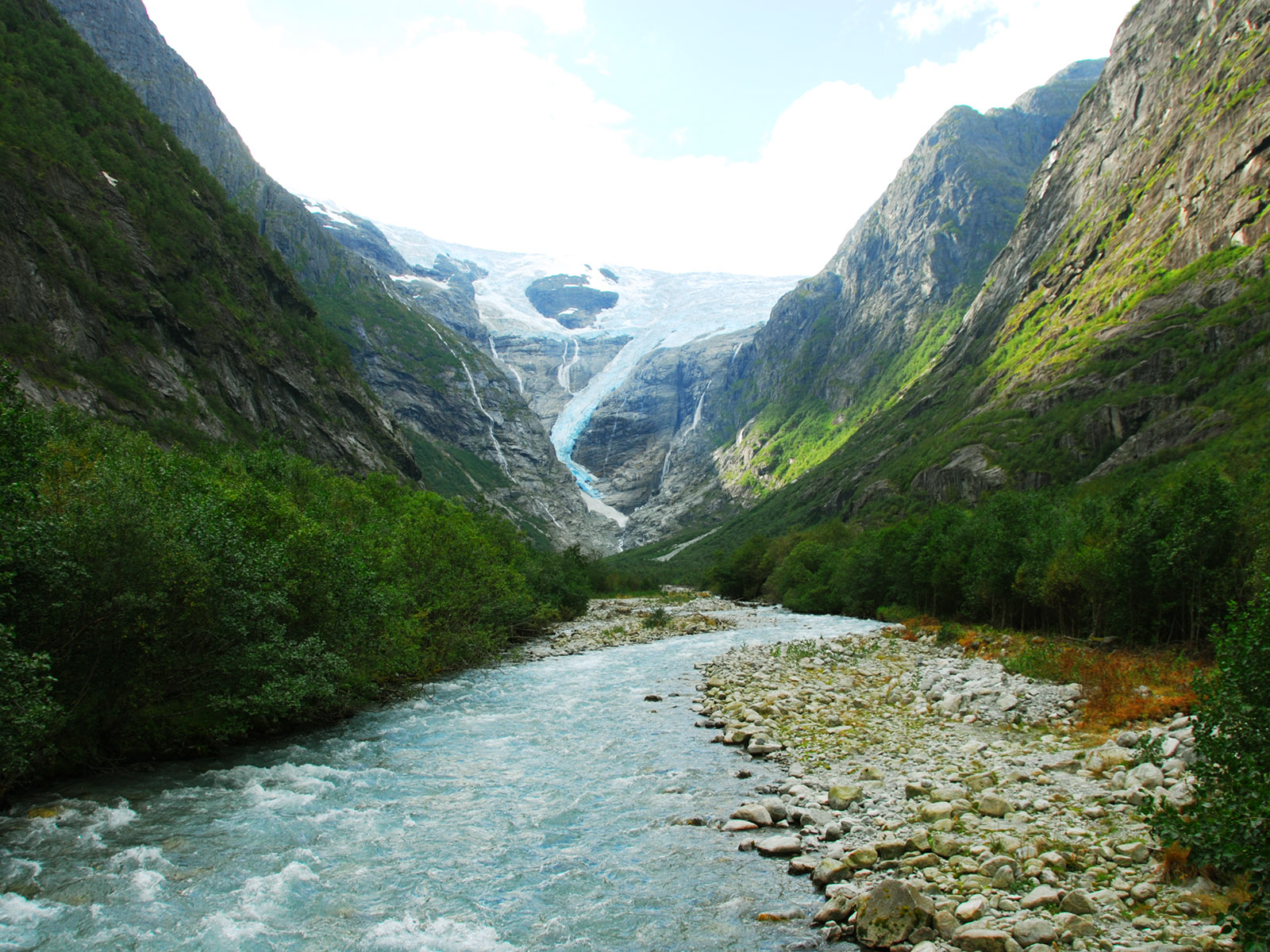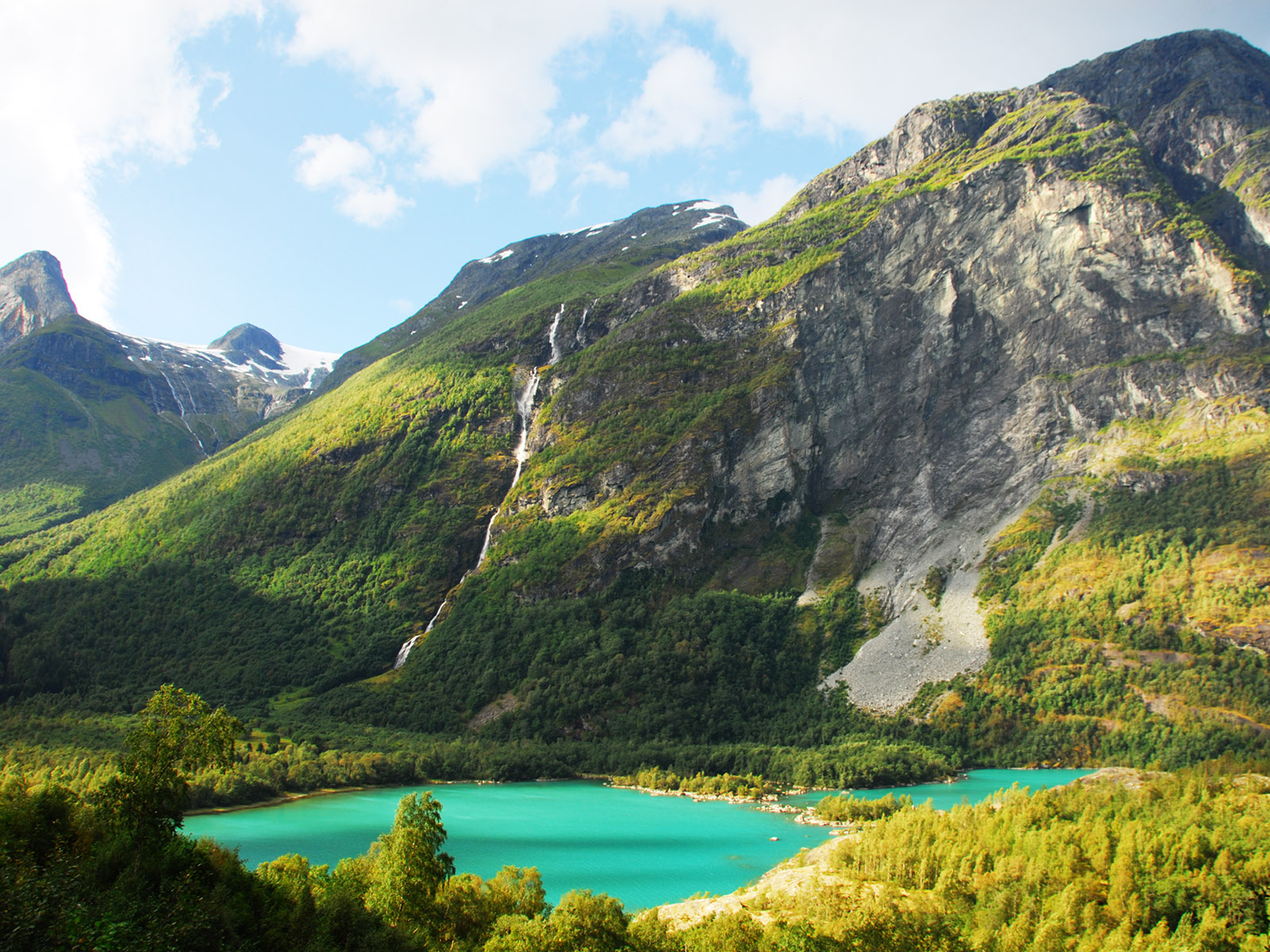
The lake Lovatnet in Loen, Nordfjord, stretches almost from the fjord eleven kilometres to the southeast. At its inner end there are three short valleys, which all end below our largest glacier, Jostedalsbreen. Even on the clearest days the moisture in the air may condense above the glacier, creating clouds (or fog to those that may be up there) and sometimes showers down in the valleys. Like today. Since the 1880s Loen has been a tourist attraction and from 1892 tourist has travelled by boat to Kjenndal at the inner end of the lake, and then further up to the Kjenndal glacier, earlier by horse and carriage. Evenings and nights may still be spent in noble Hotel Alexandra down by the fjord, first opened in 1884 for British lords and common tourists.
(2015-09-12)

Up the valley Kjenndalen we get a look at a branch of the glacier, or what is left of it. When I visited the site in 1960, the glacier stretched down to the valley floor. In front of it was a large rocky and lifeless plain, showing that the glacier had retreated recently.
(2015-09-12)

The inner end of Lovatnet. The green colour is caused by minerals scratched loose by the moving glacier and brought down by the meltwater, and just now it was melting fast. The mountain to the right with the large scar is Ramnefjellet ("the Raven Mountain"). Sunday 15 January 1905, shortly before midnight, a large chunk of it broke loose and fell into the lake, creating a great wave. In Bødal to the left 27 people were killed and in Ytre Nesdal to the right outside the picture, all the 34 inhabitant died, in total exactly half the population of the two hamlets. Only nine or ten of the bodies were ever found. A lot of domestic animals were killed, houses were destroyed and much soil was washed away, but all the survivors stayed and built new houses and cultivated new land. On the early morning of 13 September 1936 it happened again and 74 people were killed. After that nobody chose to live in Bødal and Nesdal. In June 1950 the mountain shed a third large chunk of rock, but now this part of the lake had become quite shallow and – adding some luck – there were no fatalities. If this picture ha been taken when the water is clear, it would have disclosed how shallow this part of the lake has become. In the Western Fjords there have been many such accidents in the past (e.g. Tafjord 1934, 40 fatalities), and we're waiting for the next one. A probable site would be Åkerneset 45 kilometres to the north as the crow flies, where a 600 metres long and up to 25 metres wide crack high above the fjord is expanding year by year. When the rock falls, an enormous tsunami will hit populated places like Stranda, Stordal, Geiranger, Hellesylt, Eidsdal, Norddal, Valldal, Tafjord ... There is an advanced warning system installed – let's hope and pray that the warning signal will sound in time.
(2015-09-12)
